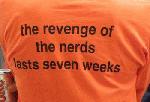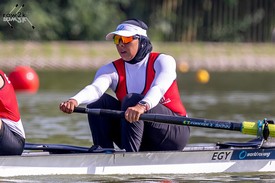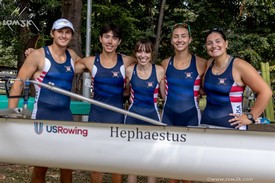A Critique of The Game of Life

Nomura Professor of International Financial Systems, Harvard Law School at the Sesquicentennial Celebrating 150 Years of Harvard Intercollegiate Athletics
Harvard University
November 22, 2002
I want to thank the organizers for inviting me to the celebration of 150 years of Harvard's participation in intercollegiate athletics. It is a great occasion. I also welcome the opportunity to have an open and serious debate about The Game of Life. The issues raised in this book are important-they go to the very question of what qualifies as a first-rate college or university. They also go to the survival of competitive intercollegiate athletics at Harvard.
The Findings
The authors' major conclusion is that there are too many recruited athletes in selective schools like Harvard. They argue that these athletes have significantly lower academic credentials for admission than other students, and thus displace more worthy admits. They further argue that the athletes do not take advantage of their college opportunity-they underperform their expected academic performance, and their anti-intellectual jock culture is damaging to the "academy." All these contentions are supposedly supported by statistics taken from 30 schools, including 4 Ivies (not Harvard).
Major Flaws in Statistical Analysis
The major problem is that the authors' own statistics do not show what they say they show. One of the authors' most quoted statistic is that athletes have a 48% better chance of being admitted than other applicants, despite significantly worse academic credentials. This is based on one unidentified school in 1999 which is hardly a reliable sample. Further, it totally ignores that athletes go through a pre-selection process; before athletes formally apply their prospective coaches get a read from admissions. Many athletes are rejected through this process, and the ones that go on to actually apply have a high probability of admission. Those rejected in the pre-read do not actually apply. A fair comparison of the probability of admission would take this into account. The authors knew about the problem but buried it in an endnote.
The authors attempt to document the difference in admission credentials between athletes and other students mainly by looking at SAT I test scores, using them as, in effect, a gold standard, despite the fact that they are not a very good predictor of academic performance. The most recent California study shows that they predict less than 13.6% of variance in GPAs at selective schools.
Even assuming the SAT1 is a valid benchmark, the SAT score differences between students at large and athletes in Lower Profile sports, those other than football, men's ice hockey and men's basketball, are minor and not increasing over time. About 90% of all athletes at the schools in the study are Lower Profile; in 2002 at both Harvard and Williams they were 85%, at the women's colleges they were, of course, 100%. For these Lower Profile athletes in the Ivies the difference in average SAT scores with students at large was 36 points in 1976 and 39 points in 1989. A recent follow-up study by Shulman, using the class of 1995, shows a difference in Lower Profile sports of 60 for men and 30 for women (no overall figure is given). And these are averages. Many and even most athletes in Lower Profile sports have the same average scores as non-athletes. In any event, are we really worried about the SAT credentials of a woman athlete with a 1440 rather than a 1470 SAT score? The authors would like to leave the impression that the 1440 athlete could be replaced by the 1600 non-athlete, but this is true for a very, very small number of schools. In the end, admissions is a marginal decision, and the real question may often be whether you want second tier academic credentials of a non-athlete versus slightly lower credentials of a first-rate athlete.
There are significant SAT gaps for the 10% of athletes in the Higher Profile sports, men's football, basketball and ice hockey. We know from prior work that there are significant SAT gaps for minorities at selective schools. The authors' data do not tell us the extent to which the SA T gaps for athletes are due to minority athletes. The authors do tell us that African Americans were 26% of all Higher Profile athletes in 1989 compared to 5% of students at large. The numbers have likely increased in the last 11 years. We also know from national statistics for 2000-2001, that in two of these sports, football and basketball, African American athletes are very significant: overall they constituted 30% of the football players and 40% of the basketball players. I would hope that Mellon's follow-up studies would tackle this issue head on.
A second finding featured by the authors is that athletes underperform their expected academic performance. The degree to which there is actual underperformance depends on the predictive model. The authors again rely on SAT I's, even though they are a poor predictor. However, internal studies at Harvard and other schools, Princeton, Trinity and Williams, based on their more accurate predictive models, show no underperformance. This is startling considering the time commitments required of college athletes. Shulman and Bowen contend that time commitment cannot explain lack of performance because students in other demanding extracurricular activities do not underperform. But the Harvard data show only 18% of students involved in publications and 15% in the arts spend over 20 hours of week on their activities, as compared with 78% of the athletes. Given their time commitments, the equal expected academic performance of athletes with non-athletes is truly extraordinary. We should celebrate this performance, not demean it.
This book is a primer on the misuse of statistics. It is built on a non-representative database of30 schools, 4 of which are entirely discarded. For some issues only 15 are used. The study constantly shifts its kaleidoscope on the data to make a point. If the authors want to emphasize the high concentration of athletes, they look at small schools like Williams rather than Stanford. When they want to analyze SAT advantages they look at Higher Profile rather than Lower Profile athletes, or when they want to emphasize what they regard as undesirable money grubbing athletes going to Wall Street they look at men rather than women. Shulman was quoted in the Crimson last June as saying "economists who reviewed the book...felt that the research was well thought out and well documented." I am embarrassed to say that I cannot find any reviews by economists that examine the authors' use of statistics; I would be grateful for some citations.
Part of the authors' technique is to use anecdotes to make their point. That is fine, but they only tell the part of the anecdote that makes their point. Take the story of the Williams women lacrosse team with which the book begins. The authors recount the story of President Harry Payne who prohibited the 1996 undefeated women's lacrosse team from accepting a bid to the NCAA championship tournament because the timing conflicted with spring term final exams. Payne is depicted as the champion of academic standards who was viciously attacked by philistine players and their parents. The authors fail to disclose that the team was not a bunch of dummies; their average GPA was 3.24, nor does it explain why special arrangements could not be made for the players to take the exams, nor why the men' s golf and tennis teams were permitted to participate in their NCAA tournaments with the same exam conflicts-Payne distinguished these cases as "low roster" teams. Nor does it tell us that years later these women have been scarred by the experience, that they feel that their opportunity to succeed at something important to them was stolen, never to be replaced. And finally, we are not told how successful this group of women have been in the real world-the true game of life.
The Mellon Foundation's Conflict of Interest
The authors of this study are key officers of the $4.8 billion Mellon Foundation, a major funder of higher education in the United States; in 2000 it gave about $25 million. William Bowen is the President and James Shulman is the Financial and Administrative Officer. Others at Mellon worked as researchers on the book. The data come from a database, collected and financed by Mellon. The authors are careful not to disassociate their views sharply from those of the Mellon Foundation. When Mellon, or its principals speak, college presidents listen. Mellon fails to disclose whether any of its funding supports research on athletic issues-but published Princeton data shows that 15% of the $3.85 million in research at Princeton funded by Mellon in 2000-2001 went for this purpose. While one is accustomed to seeing "think tanks" like Brookings or the American Enterprise Institute advance their policy objectives through funding research, they do so openly. Moreover, Mellon goes a step beyond the think tanks; it gives money to universities whose very policies it seeks to change.
Race and Diversity
Then there is the issue of race and diversity, which has been insightfully examined in Douglas Toma's and Thomas Kecskemethy's review of The Game of Life. Bill Bowen co- authored an earlier book in 1998 with Derek Bok called The Shape of the River which seeks to justify affirmative action for minorities in college admissions. A main part of their case is diversity; students benefit by interacting with people from different backgrounds. Yet in The Game of Life the value of non-athletes interacting with athletes is ignored. Athletes are often from blue-collar backgrounds-59% of athletes at co-ed liberal colleges in 1989 had fathers with a bachelor's degree compared to 82% of students at large, and have more conservative values than the students at large-37% of male .students in 1989 identified themselves going into college as liberals or far left, as compared with only 26% of the athletes. I am sure this divide would be even greater if the issue were conservative values rather than conservative politics.
In The Game of Life, SATs are a gold standard for admission. In The Shape of the River, the authors downplay SAT scores, stating "the truth is that admitting students is far more an eclectic and interpretive art-with decisions based on judgment, experience and perhaps even accumulated wisdom-than a series of formulaic calculations." This analysis of admissions for minorities is 180 degrees different than the analysis of admissions of athletes.
And when it comes to academic performance at the university, where minorities apparently do (unlike athletes) underperform predicted performance, it is the fault of the university and not the minorities. Alleged lack of performance in The Game of Life is the fault of the athletes.
The authors clearly have a double standard on diversity; its okay for minorities, but bad for athletes.
Possible Violations of Student Privacy
Another troubling aspect of this study is the possible violation of student privacy rights involved in the collection of the Mellon database. The Buckley Amendment, enacted in 1974, prohibits colleges and universities from releasing "personally identifiable information," which includes "a list of personal characteristics that would make the student's identity easily traceable." The concern underlying the Buckley Amendment is that the recipient of the data should not be able to connect up a particular student with personal information like SAT scores or high school grades. Any researcher at Mellon could identify individual students from the data provided. It would be simple to know the name of the field hockey player from Iowa who entered Princeton in 1995 and majored in Biology, and then to know her SAT scores and high school grades. This is an ongoing issue in that Mellon has most recently obtained data on the class of 1999.
Regulations under the Buckley Amendment seem to provide for an exception to the prohibition on release of data where an institution obtains it for the purpose of improving instruction. But The Game of Life is not about improving instruction; it is about whether and to what extent athletes should be at selective schools. There is no discussion in the book about improving instruction; indeed the premise is that the instruction is fine-the problem is alleged to be with the student-athletes.
The privacy problem may be even worse. It appears that Mellon has given access to individual student files in its database to outside researchers who could themselves identify individual students from the data given to them, even if they were not given actual names.
The Value of Athletics
A major failure of the book is the failure to appreciate the benefits that student-athletes bring to the colleges and universities and the benefit to students of combining athletics and education.
1. Student-athletes bring a lot to the schools. As I said before, the presence of athletes is an important element in insuring diversity. Athletes are more conservative, competitive and professionally oriented than the students at large. Future professors need exposure to future financiers; future scientists need exposure to future Kiwanis club presidents. In my view, the primary mission of a college or university should be to create responsible citizens, not just intellectuals. This requires that students confront a mix of types of people and points of view. One college president told me that if we want diversity in point of view and values, why not admit students on that basis rather than being athletes. But how would that be done? How would you get this unique combination without admitting athletes?
Athletics also enhances the spirit of the community. This is especially true of Higher Profile sports like football, where the SAT divide is more significant. Is it wrong for a school to believe that the sacrifice of significant SAT points is worth having a good football team which enhances college spirit? Many outstanding "nerds" probably prefer Harvard to MIT because of this spirit.
And for that matter, is it wrong for a school to think it is better to have a great football player than a person with 100 higher points on the SA Ts? Should Harvard take fewer ballet dancers, artists and musicians that have less than 1600 board scores? If not, is this because there is inherently something superior about a ballet dancer or a cellist to an ice hockey player?
A further consideration is that most athletes, the Lower Profile ones, give at higher rates than other students. In 1989, at the Ivies, the giving rate for Lower Profile men athletes was 56% compared to 51% for male students at large, and women athletes gave at the rate of 58% compared to 53% for women students at large. What also matters, of course, is the size of gifts. Many believe athletes give more because they earn more, but the authors do not give us data on the amount of giving.
The authors depict athletes as a negative factor on campus, the anti-intellectuals reveling in jock culture. Jock culture is the villain of the piece, although it is never really defined. It is generally characterized, however, as glory seeking, eating and lifting, and money-grubbing (a/k/a making a decent living). But towards the end of the book it becomes "cheating, falsification of academic records, point shaving, gambling, violence, and other blatant abuses that attract the attention of the media." No examples of the darker side are actually given for the selective schools in the study, and no attempt is made to discern what percentage of athletes engage in these activities, compared to other students or whether this is an equal problem for men and women athletes. This is stereotyping, pure and simple. I could not help but think about the demonology of jock culture as I attended the memorial service at the Supreme Court last weekend for Justice Byron White, certainly one of the greatest scholar-athletes this nation has produced.
Let me read to you from a story that appeared in Princeton's football game program two weeks ago. Greg Van der vink, a world famous Geosciences professor, serves as a fellow to the women's golf team as part of an innovative program of faculty fellows at Princeton. He actually plays golf about four times a year and has never broken a 100. He did not become a fellow because he was a golfer. Why did he? A woman student told him she could not tell another professor that she had to miss class to attend a golfing event because, and here I quote Van der vink, "if the professor found out she was playing sports, then she wouldn't be thought of as a serious student. That broke my heart," he said. He went on to say, "[h]ere was a student who had demonstrated great excellence and achievement in an important area who felt she had to hide it from a faculty member...A student who has a chance to achieve a level of excellence in athletics should never have to feel that counts against them in academic life."
2. Athletic participation clearly brings a lot to the students. The lessons of life are learned on the playing fields. Camus said that the only context in which he really learned ethics was sport. Athletes compete, deal.with winning and losing, bond with and resolve conflicts with teammates. They learn to manage their time and multitask. All of this makes them successful in life. The authors contend that athletes learn these life lessons in high school, or perhaps even grade school. But one does not get the same lesson from an experience at 10 as at 21.
It may seem obvious that education gives a tremendous amount to athletes. But not to the authors. They believe that the experience of athletes at college has little to do with their later success in life. They state that this success is "mainly a function of some combination of the vocational interests and values of athletes (which were evident when they entered college), their experiences playing sports before they entered college and the contribution of their personal traits " This is quite astonishing; it suggests that athletes could walk onto Wall Street and skip college altogether. Athletes learn a lot in college, which combined with their innate skills, enable them to succeed in life.
In important respects, the attack on athletes is part of a culture war pitting conservative advertised to its alumni that this is only a 10% reduction from its prior ceiling of 72. But this is a half truth, since 72 was really a target and not a limit. Williams regularly had preferential matriculations of around 85 athletes in the past, and this has now been slashed by 22% in just one year. And Williams is unilaterally going even further, limiting to 12 the number of athletes who can have SAT I scores between 1150-1250. It appears, however, that this low band limit will not apply to African-Americans. Will this create an incentive to recruit African-American rather than white football players? Does this make sense? Is it even legal?
What is happening here is that the Lower Profile athletes who modestly differ from students at large are being cracked down on because of the alleged problem with Higher Profile athletes. Does this make sense? Should women athletes, all of whom are Lower Profile, be tarnished by the brush applied to some of their male Higher Profile classmates? Does this make sense? Is it even legal?
In the nether world of rumors-none of these actions are transparent or openly debated-there is word that NESCAC may adopt its own set of preferential limits, 14 like the
Little Three for football, plus 5 for men's hockey, and 2 for every other sport, for a total of84. Again, each school will have to decide what preferential means. But Williams will apparently still stick with its lower overall limit of 66.
Colleges and universities would do better to concentrate on the other side of the equation by engaging athletes in the intellectual life of the campus. Princeton has led the way with faculty fellows and other schools provide on demand tutors to all athletes, the good as well as poor students, which serves to compensate for the extraordinary time demands of college sports.
Alumni and The Marketplace
It is interesting that Mellon has now focused on NESCAC and the Ivies as their targets of I change. Why not other bigger players in athletics like Stanford who were also part of their study? Probably because Mellon has less influence there because of the power of organized athletic alumni groups at such schools. Alumni athletes at the Ivies and NESCAC are much less organized. Athletic alumni at these schools should demand that the whole process of the examination of athletics and proposals for change become more transparent and that these schools openly disclose their plans and discuss them within their communities before adopting them.
In the end it may not matter what the Ivies or NESCAC do because there is a bigger marketplace out there. If Harvard, Princeton and Williams surrender their market position with student-athletes, other schools like Stanford will be more than happy to take their place. Indeed, women's colleges may suddenly be given a shot in the arm. The schools with the most appealing mixture of athletics and academics will rise to the top. That is the real game of life.
If you enjoy and rely on row2k, we need your help to be able to keep doing all this. Though row2k sometimes looks like a big, outside-funded operation, it mainly runs on enthusiasm and grit. Help us keep it coming, thank you! Learn more.
- Bont Rowing
- Calm Waters Rowing
- Concept 2
- Craftsbury Sculling
- The Crew Classic
- CrewLAB
- Croker
- Durham Boat Co.
- Empacher
- Faster Masters
- Filippi
- Fluidesign
- h2row.net
- HUDSON
- Live2Row Studios
- Nielsen-Kellerman
- Oak Ridge RA
- Peinert Boat Works
- Pocock Racing Shells
- Race1 USA
- RowKraft
- Rubini Jewelers
- Vespoli USA
- WinTech Racing
- Bont Rowing
- Calm Waters Rowing
- Concept 2
- Craftsbury Sculling
- The Crew Classic
- CrewLAB
- Croker
- Durham Boat Co.
- Empacher
- Faster Masters
- Filippi
- Fluidesign
- h2row.net
- HUDSON
- Live2Row Studios
- Nielsen-Kellerman
- Oak Ridge RA
- Peinert Boat Works
- Pocock Racing Shells
- Race1 USA
- RowKraft
- Rubini Jewelers
- Vespoli USA
- WinTech Racing

















